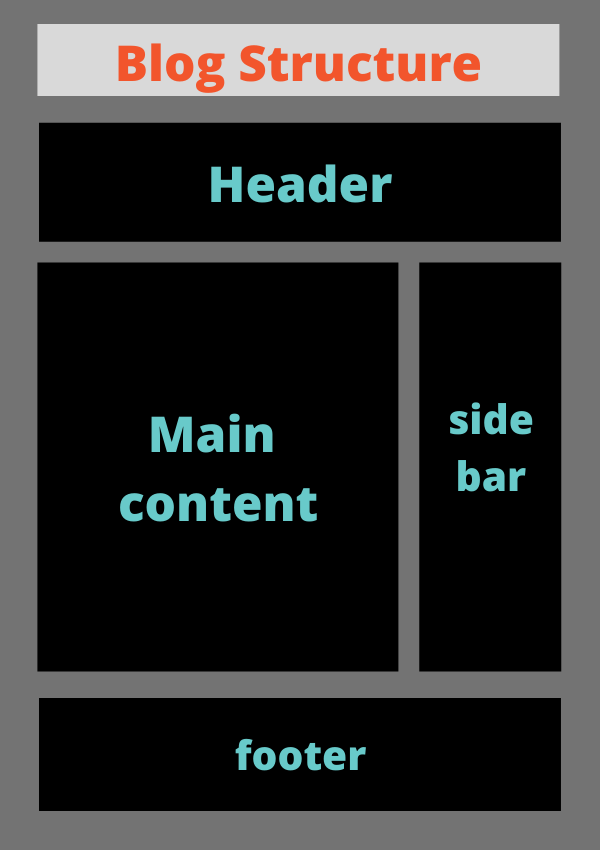A blog is simply the short form of web log. A blog (short for “web log”) is an online journal or informational website that displays content in reverse chronological order, with the most recent posts at the top. It’s a platform where a writer or a group of authors may express their thoughts on a specific topic.

When blogs first began in 1994, they were more of a personal diary that people posted online. You might talk about your daily life or share what you were up to in an online journal. People recognised an opportunity to exchange knowledge in a new way via the internet at that time. As a result, the wonderful world of blogging was born.
Must Read: How to Start a Blog
There are about 570 million blogs on the internet now. By 2020, the number of bloggers in the United States is expected to reach 31.7 million.

What is the purpose of a Blog?
There are numerous compelling reasons to establish a personal blog, but only a few compelling reasons to start a corporate blog. Blogging for company, projects, or anything else that can make you money has a simple goal: to improve your website’s visibility in Google’s search engine results pages (SERPs).
You rely on customers to keep buying your products and services as a business. You rely on blogging as a new business to help you reach out to potential customers and capture their attention. Your website would be invisible if you didn’t blog, but blogging makes you searchable and competitive.
As a result, the primary goal of a blog is to connect you with the appropriate audience. Another is to increase your website’s traffic and generate high-quality leads.
Your website’s chances of being discovered and visited by your target audience increase as your blog posts get more regular and better. This means that a blog can be used to generate leads. Your website traffic will be converted into high-quality leads if you include a compelling call to action (CTA) in your content. A blog also allows you to develop a brand and exhibit your niche authority.
It develops trust with your readers when you leverage your niche knowledge to create helpful and interesting blogs. Excellent blogging gives your company a more respectable image, which is especially vital if your company is still relatively unknown. It promotes web visibility while also establishing specialist authority.
Blog Structure

The appearance of blogs has evolved through time, and they now incorporate a wide range of things and widgets. Most blogs, however, still include some common features and architecture.
A typical blog will include the following features:
- The menu or navigation bar is in the header.
- Highlighted or most recent blog entries in the main content area.
- Social links, preferred content, or a call-to-action can all be found in the sidebar.
- Footer includes useful links such as a disclaimer, privacy policy, contact page, and so on.
What is a Blog used for?
- To improve your company’s search engine ranking.
- To become an industry expert by sharing information on a specific issue.
- To bring people to your site and convert them into leads.
- To build an online community and interact with a target audience.
Blogs and Websites

Many individuals still don’t understand the distinction between a blog and a website. What is the difference between a blog and a website? Today, distinguishing between the two is even more difficult. Many businesses are including blogs into their websites, further confusing the two.
What differentiates Blogs from Websites?
Blogs must be updated on a regular basis. A food blog that shares meal recipes or a corporation that writes about industry news are both good examples of this.
Blogs also encourage reader participation. Readers have the opportunity to remark and share their various issues and ideas with the community. On a regular basis, blog owners add fresh blog entries to their site.
Websites, on the other hand, are made up of content that is shown on static pages. Owners of static websites rarely update their pages.
A publishing date, author reference, categories, and tags within a byline are all key components that distinguish a blog post from a static internet page. While not all blog articles include all of the byline components, static website pages do. A static site’s content will not change from one visit to the next from the visitor’s perspective. The content on a blog, however, will offer something new each day, week, or month, depending on the blog owner’s publishing schedule.
Most Popular Types of Blogs in 2024
- Food blogs
- Travel blogs
- Health and fitness blogs
- Lifestyle blogs
- Fashion and beauty blogs
- Photography blogs
- Personal blogs
- DIY craft blogs
- Parenting blogs
- Music blogs
- Business blogs
- Art and design blogs
- Book and writing blogs
- Personal finance blogs
- Interior design blogs
- Sports blogs
- News blogs
- Movie blogs
- Religion blogs
- Political blogs